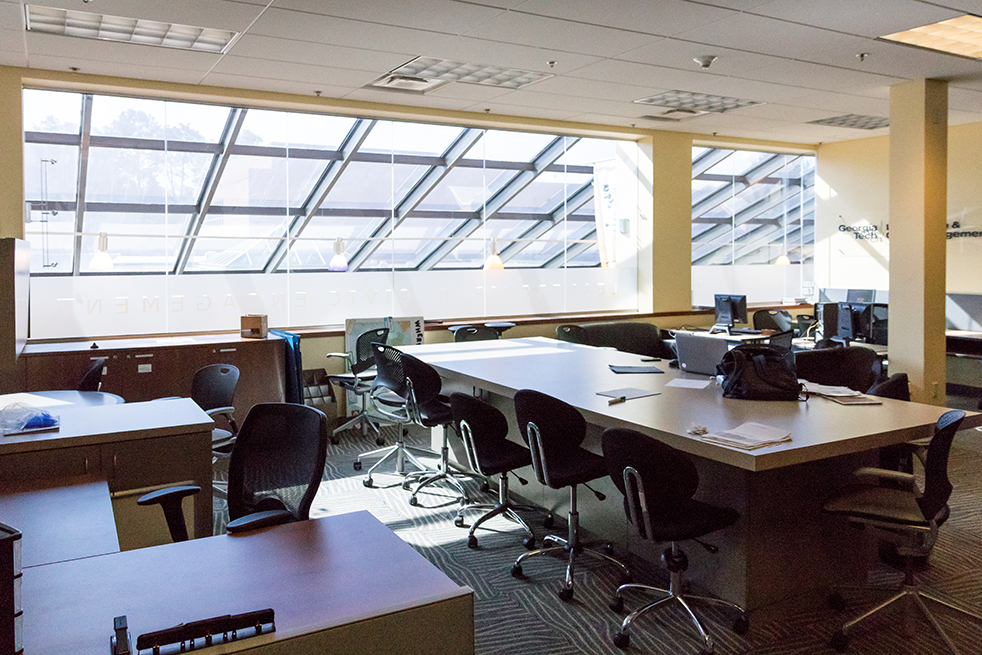A strategic positioning study has been conducted by Workshop Architects, Inc. in order to identify the highest priority goals of an upcoming expansion and re-branding effort for Tech’s Student Center.
The study consulted with over 250 students and staff on campus, and concluded that there are five main “jobs to be done,” or primary goals, that the expansion of Tech’s Student Center would ideally accomplish.
Firstly, the Campus Center will aim to appeal to everyone in Tech’s community.
“We don’t want people to mistake it for an Undergraduate Student Center,” said Rich Steele, Senior Director of Auxiliary Services at Tech. “The idea is that we’re referring to it as a kind of Campus Center, as opposed to a Student Center, that’s very inviting to everyone here at Tech: faculty, staff, grad students, undergraduate students, visitors. We want everyone to feel comfortable and welcome coming to the Campus Center.”
Secondly, the new Campus Center would provide a place to “reset, recover and refuel,” according to the study.
“Many of the spaces at Georgia Tech, like the Clough Commons, are made as ‘lean forward’ spaces where people are engaged and focused on work, maybe a little more serious and a little more stressed out” Steele said. “The consultants said we need a space that people perceive as more ‘lean back’, where they can take a breath and relax… And that’s a place we’re kind of lacking in the Student Center right now.”
While students in the strategic study cited “active restoration” opportunities such as the Campus Recreation Center (CRC) and Couch Park, “passive restoration” opportunities other than Under the Couch, Tech Rec and Paper & Clay (all in the current Student Center) were found to be limited. According to the results of last year’s Student Experience Survey, 82% of Tech students experience a “high degree of stress,” and as a result, the strategic positioning study concludes that, “It is clear that Tech students require relief and recovery from the daily grind.”
Thirdly, the new center would “showcase Georgia Tech’s brand and be [a] catalyst for creative expression.” Students surveyed in the study reported desires for a more substantive and engaging connection between the Student Center and Tech’s history, as well as the current goings-on with Tech’s multitude of student organizations.
“Show off Tech’s techiness and the heritage of Tech with a museum,” said one student in the survey. Another student mentioned the idea of exhibiting current projects at Tech.
“It would be great to have a sense of openness so I would know what’s going on with different academic organizations,” the student said. “As an architecture major, I don’t have time to go to every academic building on campus. I didn’t know that someone built a solar-powered anything.”
Fourth, the Campus Center will act as a social place to make friends and learn about other people’s cultures, disciplines and interests.
“The problem with the current Student Center is that it’s become very transactional,” Steele said. “People come here to purchase food or to eat their food, and we want it to be used for much more than that.”
Numerous students expressed interest in using the Campus Center as a cultural hub, with social events spotlighting different countries and cultures in addition to using the space as more of a gathering place for campus organizations.
The new Campus Center will “promote leadership, involvement and finding one’s niche.” It will accomplish this by creating a hub of organizations and official offices. Though a number of organizations currently have office space in the Student Center, the study reports that many other groups who are deserving of physical space are still lacking it at this time.
“The different involvement and leadership spaces need to be very robust,” said one undergraduate involved in the study. “A lot of people in [big organizations] don’t know where all these different offices are, so it naturally makes it hard to cooperate with others.”
As far as the specifics of the expansion, nothing is currently outside the scope of consideration according to Steele. The study recommends that the gross square footage of the Campus Center increase to 287,692 from the current 166,856 at a hypothetical budget of between $100 million and $143 million.
No further details on what might be added or removed to the Student Center in the future currently exist. The Student Center Expansion Committee, led by Lindsay Bryant, Associate Director of Student Center Programs, and Kate Curnow, Communications & Marketing Manager, will continue holding town halls and conducting surveys to determine student interest regarding what specific elements will be included.
“We’re hopeful that we can have something significant happening or completed within the next five years,” Steele said. “In 2020, the Student Center will celebrate its fiftieth anniversary, and that is the ideal target year for us.”
